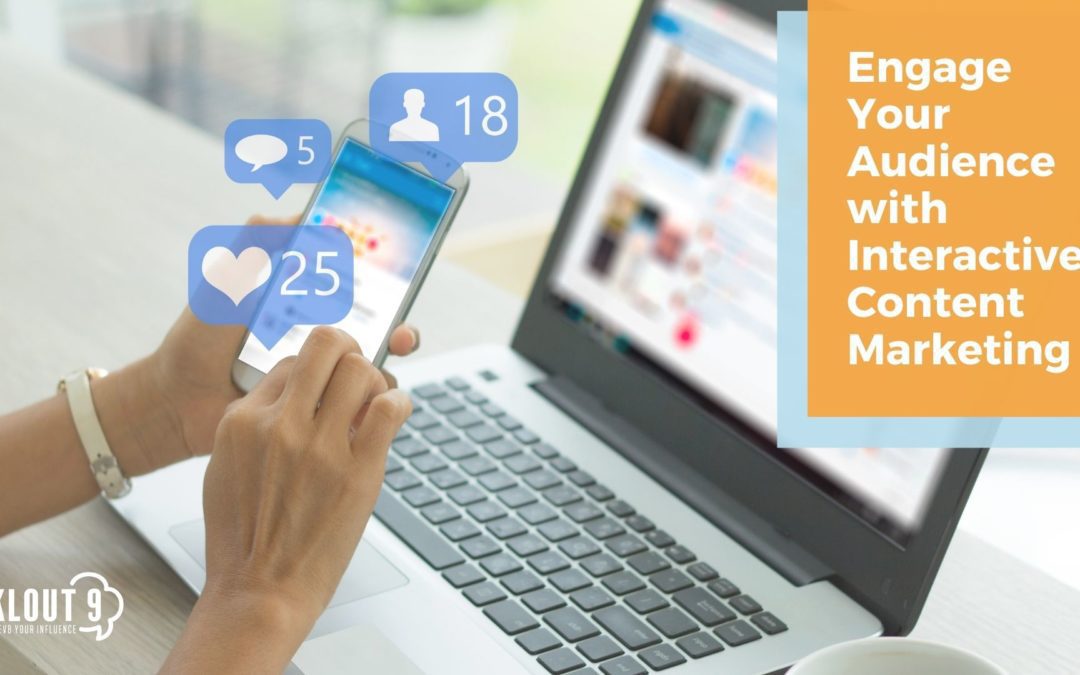People are inundated with advertising messages in their daily lives. Before online videos and pop-ups or banners on the websites we frequent, we are exposed to ads on TV, on the radio, and in the form of signage and billboards wherever we look outside.
It could be argued that we are so saturated with ads that we have become adept at tuning them out.
We rarely, if ever, actively pay attention to ads and we may fail to even register them in our conscious experience at all.
This can be frustrating for brands since they have no way of knowing if even the most well-placed ad is being acknowledged by their potential customers. This problem can be solved by interactive content marketing.
What is interactive content marketing?
Interactive content is anything that invites the consumer to engage with it. It draws the reader in by offering an active experience rather than just a passive intake of information, as so many of us have become accustomed to.
A well-made interactive ad will make the consumer want to participate in it. It will spark their curiosity or create excitement or an emotional response.
Types of interactive content marketing
Although the types of interactive content available to you are limited only by your imagination, there are a few basic categories that have been proven successful at drawing people in.
Quizzes
Most people are fascinated with exploring various elements of their personalities. Online quizzes are a fun tool for introspection and a valuable tool for gathering useful marketing information.
If a quiz is silly or fun, people will even post them on their social media, resulting in a wider dispersal and more direct distribution to your target demographic.
Quizzes can be serious and helpful, with topics such as “Which credit card best suits your needs?” or lighthearted and funny, such as, “Which flavor of juice are you?”.
Questionnaires
Readers answer a question in order to access further information. The question can be as simple as their age or income range, or geographic location.
This not only provides the brand with useful demographic information about the people who are choosing to engage with their advertising, but also helps to tailor the ad experience to the individual user. People are much more likely to pay attention to ads they see as relevant to themselves.
Calculators
Another tool for personalizing the ad experience, calculators are an excellent choice for industries such as insurance and financial services.
Consumers input their monthly or annual income, for example, and are able to calculate the approximate amount they’d be able to save over time by using your brand’s product or service.
Maps
Clickable maps can be used to engage the user with interesting facts or pictures that tie in to your brand’s image. This can include the development, reach, or regional differences in the appearance or usage of your product or service.
Infographics
A well-designed infographic presents useful or pertinent facts into a format that makes it nearly impossible not to click through.
Various portions of the graphic can direct the user to different sections of your brand’s website or any other virtual location. People are more drawn to news and statistics when they are presented in bite-sized pieces in an attractive and artistic design.
Benefits to interactive content marketing
With interactive marketing, brands can know for certain that their advertising message is reaching people because they have a record of how many people clicked and participated in the ad. They are vastly more engaging and memorable than advertising media that lack the interactive element.
For professional and experienced assistance in your digital marketing efforts, contact us at Klout 9 and see how the top marketing agency in Lafayette, LA, can help to expand your business and increase your bottom line.

